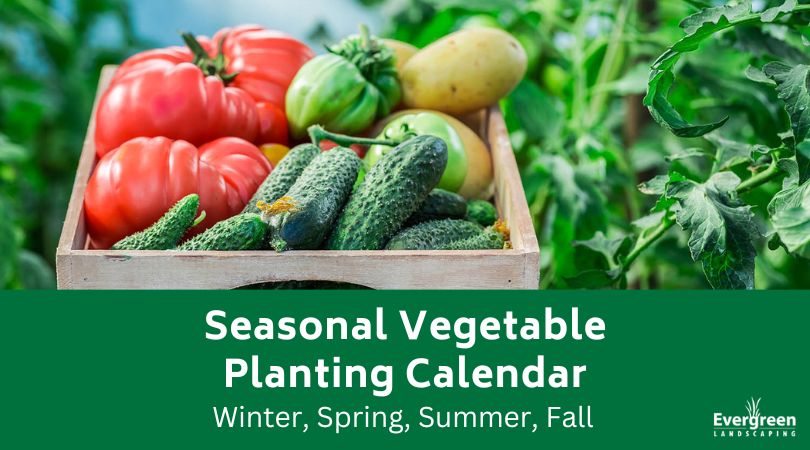
Many gardeners are unsure what to grow and when to start their vegetables. While garden centers are packed in spring with seedlings, it’s not the only season you can plant. Not every zone allows for year-round gardening, but most will give you three seasons’ worth of planting time. We’ll outline what to grow and when to maximize your yields below to take full advantage of this.
Spring Vegetables – March, April, and May
This is when the weather starts to warm up, and you can plant cold-tolerant vegetables in March. This includes broccoli, cabbage, cauliflower, endive, potatoes, head lettuce, onions, radishes, peas, onions, turnips, spinach, and beets.
You can plant chard, collard, leaf lettuce, carrots, onion sets, and salsify in April. At this time, some of the vegetables you grew in the middle of March can be ready to go, including radishes and lettuce.
By the time May rolls around, spring is in full swing. Most traditional gardening starts this month, and you can plant lima and snap beans, eggplants, cucumbers, peppers, melons, pumpkins, okra, sweet corn, sweet potatoes, winter and summer squash, and tomatoes. Also, it’s time to harvest some things you planted in April, including collard, leaf lettuce, green onions, lettuce heads, spinach, and peas.
Summer Vegetables – June, July, and August
Summer brings pests and bugs to your garden, but the planting and harvesting processes continue. By June, your collards, cabbage, snap beans, carrots, chard, endives, broccoli, lettuce, cauliflower, peas, green onions, turnips, beets, and late spinach will be ready to harvest. In addition, you can sow more snap beans, sweet corn, and cucumbers to lengthen your summer harvest.
When you get to July, you’ll start planting your fall crops. Carrots, cabbages, cauliflower, turnips, and broccoli are ready to harvest. Snap beans, potatoes, summer squash, and cucumbers should be growing nicely at this point, and your peppers, melons, tomatoes, and sweet corn should be almost ready to harvest. Replant another round of broccoli, cabbage, carrots, and cauliflower to harvest in the fall.
In August, you’ll focus more on harvesting than planting. Cucumbers and beans are usually a considerable harvest at this point, and both watermelon and eggplants are ripening. In addition, okra, peppers, summer squash, sweet corn, and tomatoes are ready to harvest, and you can replant your lettuce, radishes, spinach, kale, beets, and turnips for a late-season harvest.
Fall Vegetables – September and October
Once the weather gets less predictable and the leaves start to turn, the seasons shift to fall. Everything that didn’t ripen in August will finish in September and October. You’ll be able to harvest cucumbers, lima beans, peppers, eggplants, squash, sweet corn, tomatoes, pumpkins, and winter squash. If you planted a second round of your crops for a fall harvest, you’ll enjoy carrots, cabbages, broccoli, beets, lettuce, cauliflower, spinach, radishes, and turnips.
Depending on the local climate, you may be able to plant a few winter vegetables at this point. Spinach, leaf lettuce, and turnips are all viable options to consider.
Winter Vegetables – November
Any straggler vegetables that were still ripening in October should be ready to harvest now. In addition, a few early varieties you planted in early to mid-October should be ready to pick at the end of November or the beginning of December. Baby spinach is a very popular crop this time of year, and it’s time to dig up any beets or potatoes you left in the ground from the last planting session.
Contact Evergreen Landscaping for More Information on Growing Vegetables
If you’d like to learn more about which vegetables thrive in your planting zone, contact us. We’re happy to help set up a planting schedule to ensure you get a large harvest throughout the seasons.
